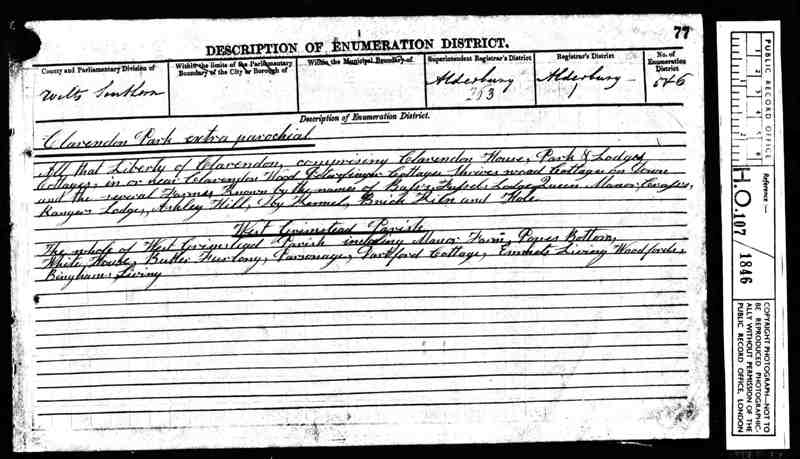| HOME |
| BASTARDY ORDERS |
| CANAL |
| CHURCH |
| DOMESDAY BOOK |
| ELECTORAL REGISTERS |
| METHODIST CHAPEL |
| PHOTOGRAPHS |
| RAILWAY |
| ROLL OF HONOUR |
| SCHOOL |
| SOLDIERS of WG |
| SURNAMES |
| TITHE MAP |
| VILLAGE HALL |
| WAR MEMORIAL |
| USEFUL LINKS |

Click to enlarge picture
| 1841 |
| 1851 |
| 1861 |
| 1871 |
| 1881 |
| 1891 |
| 1901 |
| 1911 |
Click on the dates above to view transcriptions
THE CENSUS is the survey taken by the government every ten years to collect information on the population of the UNITED KINGDOM
Prior to the 19th century lists of names were generally, compiled by Lords of the Manor and The Church. Sometimes this was for rent, tithe or tax purposes, sometimes to facilitate military recruitment.
In 1800 the Population Act was passed and every incumbent was required to supply the number of baptisms, marriages and burials from his parish. From 1801 to 1831 the census enumerators were simply required to count heads. Some did record some personal information and some of these early lists and censuses do survive in record depositories throughout the country. Although interesting in themselves, they are not much help to the family historian.
Then came the 1841 census. This required the census takers to make note of town, street and family information such as, age, occupation and whether or not a person was born in the county, making this a real research tool in helping to trace ones ancestors. Subsequent censuses recorded even more information than in 1841, such as, exactly where a person was born. Thus enabling a researcher to narrow their research area dramatically.
For the last few years, those of us whose hobby is genealogy have spent many hours trawling through these census films. Many of us have transcribed census pages and have made indexes of the names we have found, so making research easier for other family historians. You will find my contribution to this on the pages linked here.
Remember when looking at these West Grimstead families that they lived in a time without cars, telephones or electricity. No washing machines or central heating. The roads were just hard-bottomed tracks and water was drawn from a well. There were no antibiotics and doctors had to be paid for.
Notice the size of families and all the mouths to be fed and note the number of workers required to work a farm.
Try to imagine life in this village just 150 years ago
For further census information view the National Archives Census Information page